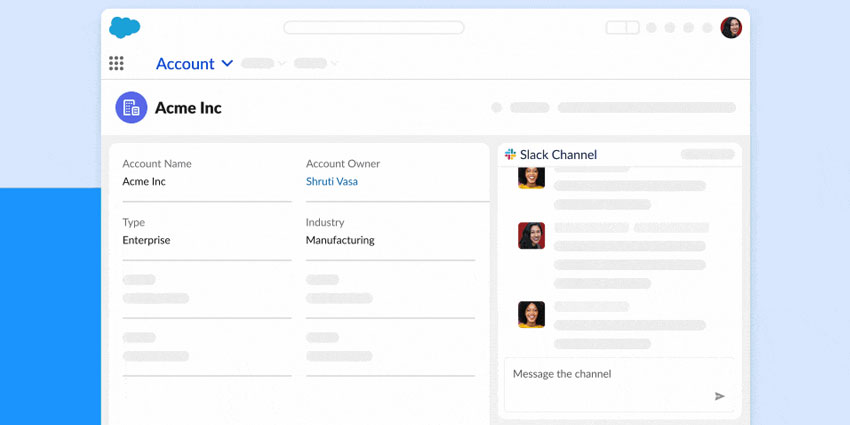Salesforce has embedded Slack across its Salesforce Customer 360 apps.
In doing so, it aims to empower employees to communicate using the apps they’re already working from.
Indeed, from each CRM app, humans and AI agents may send data points, customer cases, and other critical context across Slack while working directly from a real-time view of the customer.
For Salesforce, the move will help eliminate the gaps between conversations and customer data, enabling hybrid human-AI teams to resolve problems and make decisions more quickly.
Early tests show that the embedded Slack function has reduced information search time by up to 30 percent.
Of course, the capability is somewhat reminiscent of Salesforce Chatter, which Parker Harris, Co-Founder & Chief Technology Officer of Salesforce, promised to “kill” late last year.
However, the new Slack functionality will allow businesses to bring together key data points with the people who can act upon them, no matter where they are in the business.
As Salesforce notes, the move is a significant milestone in a broader strategy to unify “every” piece of data and metadata, every workflow, and every AI agent onto one platform.
In stating this aim, the company underscores its ambition to eventually extend much further beyond the front office and, via Slack, create an operating system for the entire business.
As Denise Dresser, CEO of Slack at Salesforce, stated in a press release:
With Salesforce channels, we’re breaking down barriers between customer data and teamwork, setting a foundation for powerful collaboration with digital labor, and strengthening Slack’s role as the conversational interface for Salesforce’s deeply unified platform.
It’s also critical to note that the channels running between Slack and Salesforce will be bidirectional, with a “Salesforce Channel” becoming available in Slack.
As such, teams can work together while leveraging different applications, sharing context, collaborating, and completing work faster. That’s opposed to constantly switching tabs and checking for updates.
These Salesforce Channels are also privy to Agentforce, which can participate in conversations between employees, summarizing discussions, answering questions, and taking action on behalf of colleagues.
Salesforce will roll out the embedded Slack functionality to customers on a standard edition package, who are also Slack customers, over the coming weeks.”
Salesforce Announces Tableau Next in Slack
In April, Salesforce introduced Tableau Next as the “world’s first agentic analytics platform”.
The announcement reframed Tableau as a place where users can collaborate with AI agents to accelerate the “entire data-to-action workflow”.
Now, the CRM leader has debuted “Tableau Next in Slack”, which will be available on the collaborations platform from June 13, 2025.
The move will allow users to share AI-powered metrics, visualizations, and dashboards across Slack canvases, channels, and messages. They may then click through into Tableau for a deeper dive.
Interestingly, teams can also surface these insights at specific moments in a workflow, alerting the appropriate humans and AI agents.
Finally, as Slack and Tableau share metadata, soon Slack users may ask Agentforce questions from the platform. It’ll then tap into Tableau to find the answers and report back.
As a result, teams get critical insights from the first platform they open up daily: Slack.
Again, this announcement underlines Slack’s new positioning as the core operating system for enterprise work.







